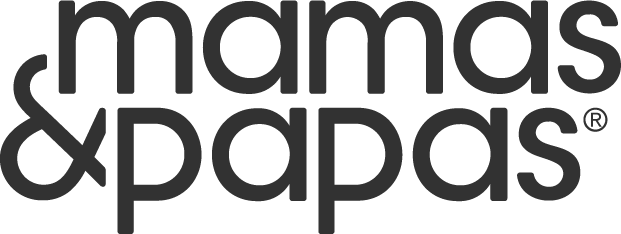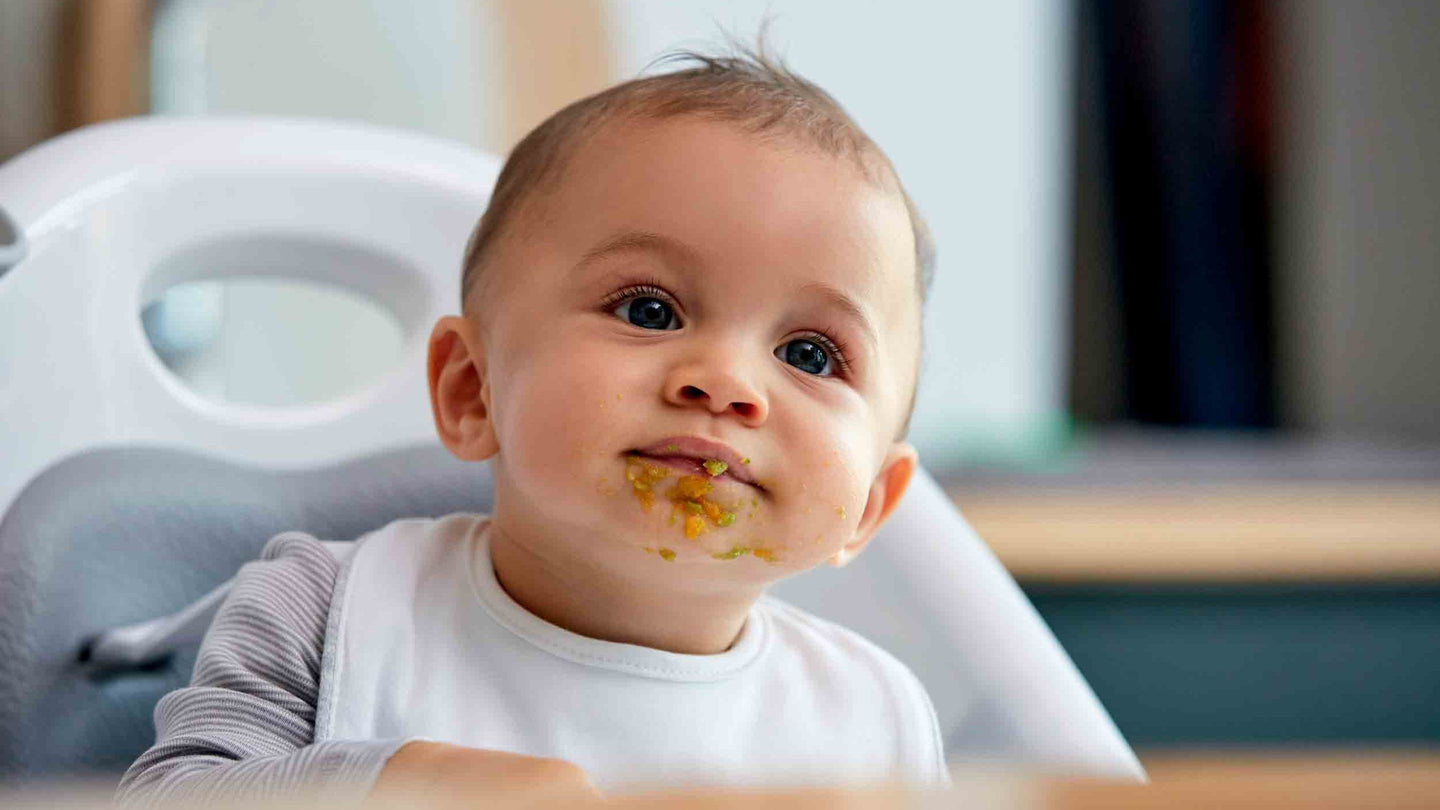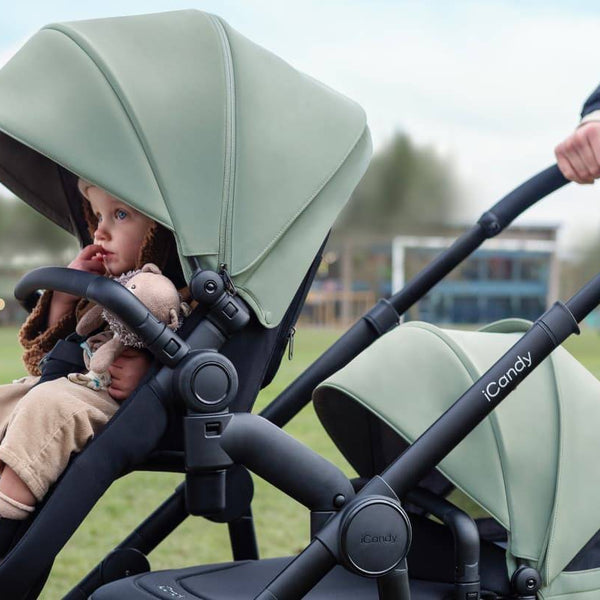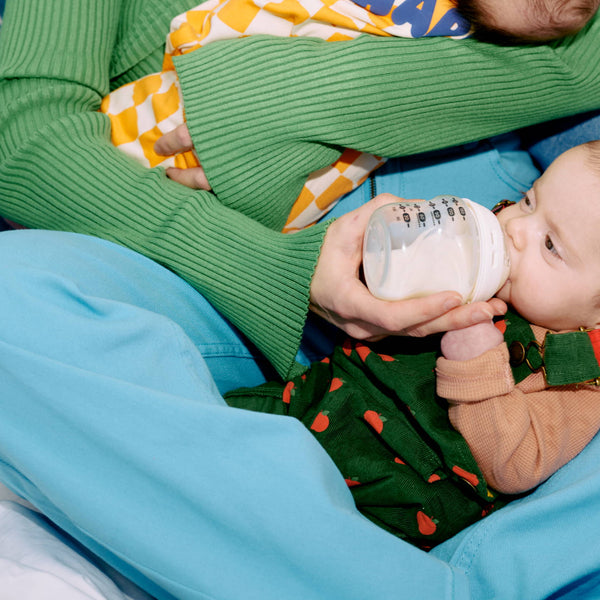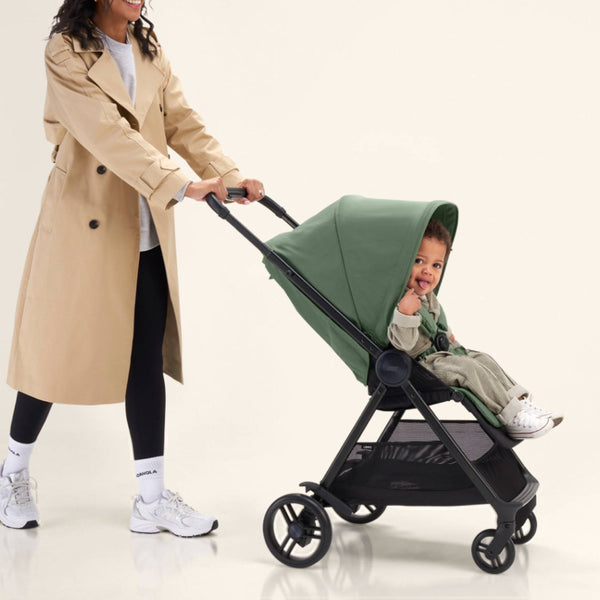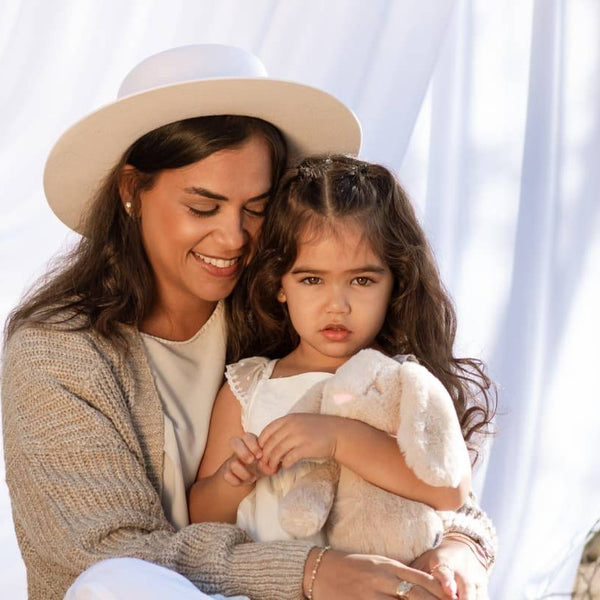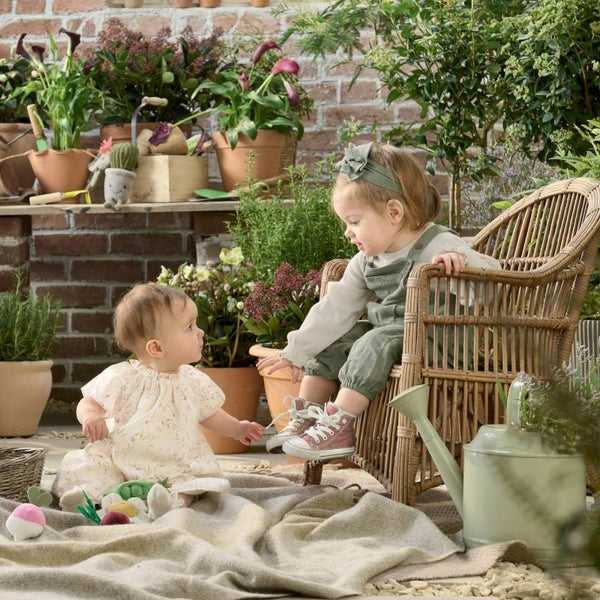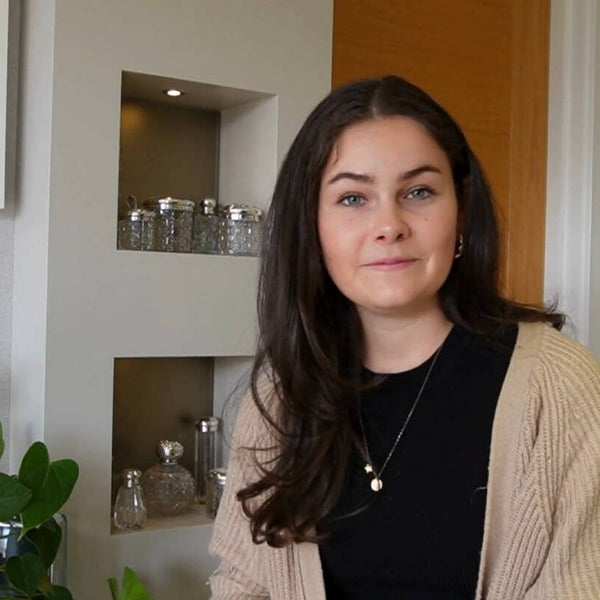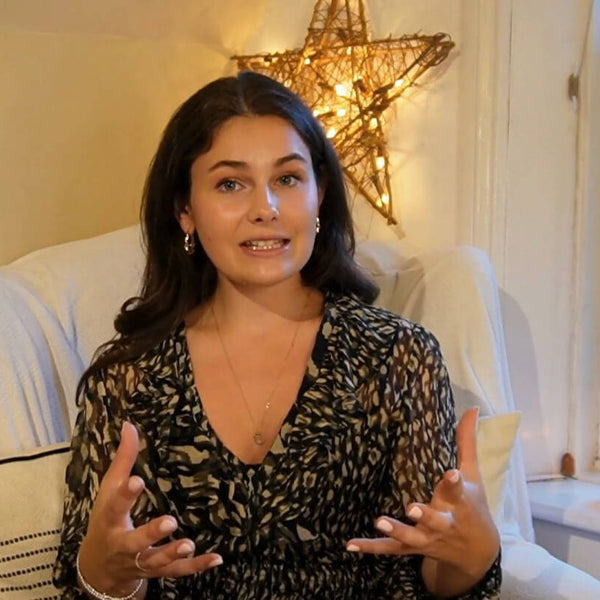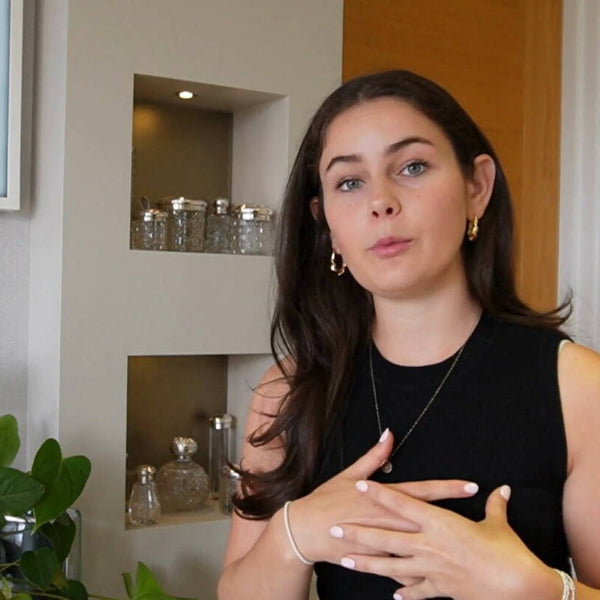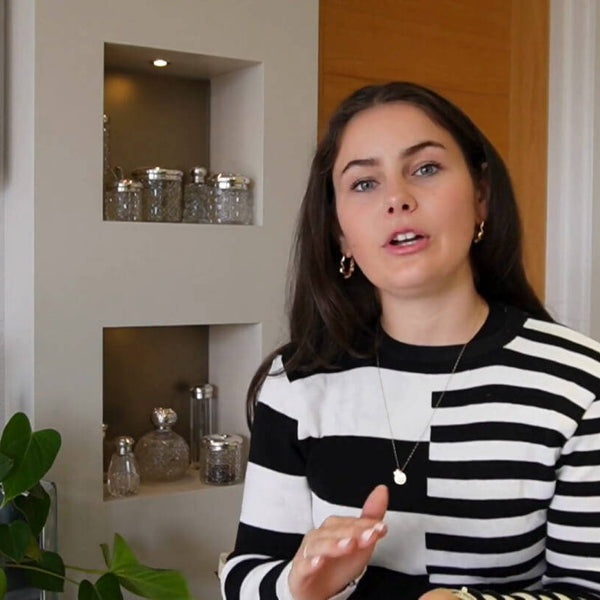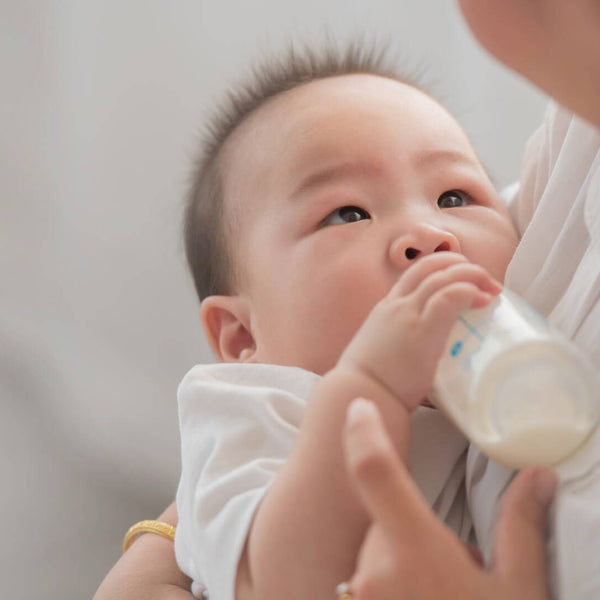When should I wean my baby? What will they eat? Will my kitchen walls be forever decorated with spaghetti? All of your weaning questions answered.
From burnt barbecue sausages to birthday cake, food is what brings you together as a family. And now it’s time to wean, your baby is going to get a taste of the good times, too. But as your little one hits this major milestone, it’s natural to feel a teensy bit apprehensive. What on earth will they eat? How much food is too much?
What if they become that nightmare fusspot who only eats beige food? What if they hate your cooking and cover you in little bits of mush on a daily basis? Fret no more. Everything you need to know about weaning is covered below.
How can I tell when my baby is ready to try solid food?
Just as some babies are up all hours and some sleep through the night straight away (who? Who are these mythical creatures?), so different babies are ready for weaning at different stages in their development.
The World Health Organization and the Department of Health both recommend you start weaning at around six months, but other organisations such as the British Dietetic Association recommend weaning by six months but not before four months.
The short answer then: when your baby is somewhere between four and six months, it’s about time to start offering them solid foods. “It’s good to have a flexible approach and, rather than watching the calendar, be led by your baby’s signals,” says registered dietician and nutritionist Priya Tew.
What are the signs my baby’s ready for weaning?
Print out this checklist from dietitian Priya and stick it to your fridge in readiness:
- They can stay in a seated position, not necessarily unaided but in a chair
- They have good head control
- They take an interest in food – some babies will watch you eat and others lurch forwards to grab food off your plate
- They can look at a piece of food, pick it up and put it to their mouth
- They can swallow food – if they can’t it will be pushed back out by their tongue
What’s the difference between weaning and baby-led weaning?
So you’re ready to start weaning, but when you look into it you realise there’s more than one way to feed a baby. Here are brief explanations of the different types of weaning – and their benefits
Traditional Weaning
“Traditional weaning means using a spoon to feed your baby purées,” explains Priya. “This can lead to more work for parents as they’ll need to prepare purées, but it’s reassuring to know how much your baby is eating because you can see how much is left in the bowl.” If you wean early, at four months rather than six, Priya recommends starting with purées. So dust off your blender and get busy.
Baby-led Weaning
“Baby-led weaning means putting the spoon aside and letting your little one feed themselves a combination of finger foods that they’re able to pick up,” says Priya. This can be messy for your floor and the baby, but a lot of babies like to feed themselves from around six months.” Don’t be surprised if you both need a bath after lunch.
A Combination
While some parents prefer spoon-feeding them purées and others swear by baby-led weaning, many will use a combination of both. In the end, it’s down to what works best for your baby and for you.
Does my baby still need milk while weaning?
Absolutely. NHS research shows babies can get all the nutrients they need from breastmilk or infant formula until they’re six months old. But because it takes a while for your baby to receive enough nutrients from food, milk is still an important part of their diet until they’re two years old.
“Though your baby still needs milk while weaning, gradually the amount they require will reduce,” explains Priya. “Feeding after your baby eats a meal is a good idea, as it means they’re not too full from the food and can top up with milk afterwards.
“If you’re breastfeeding then continue to feed on demand,” she says. "Breastfeeding can continue for as long as you and baby choose; WHO guidelines are to continue breastfeeding up to the age of two years or beyond. Many mums will find weaning can be a point when they switch to formula milk.” Somewhere between 24-32oz of formula a day is a good ballpark for a baby aged six to 12 months.
How often should I give my baby food?
“Start with offering small amounts once a day at a time when your baby is not anxious or too hungry,” says Priya. Ah, those precious minutes where they’re not crying, tired or actually asleep.
The key is to be patient, she says. “It’s a new experience for your baby, so let them get used to it and try not to rush things. You can gradually build up to three meals a day, trying a range of foods.”
How do I get my baby to try food?
Priya recommends letting your little one play with a range of foods at mealtime, rather than focus on how much they’re putting in their mouth. Or nose. Or ears.
“Try to almost ignore the fact it’s mealtime and instead see it as playtime, letting them experiment with food and explore textures and flavours themselves,” she says. “Over the next few months, you’ll notice your baby eats more and becomes more persistent in their efforts to pick up foods and chew thoroughly, and more interested in stronger flavours.”
“I was paranoid about my baby choking on lumps, but after a few weeks of purées, he wouldn’t let me get a spoon anywhere near him. Instead, I offered him soft finger foods like avocado sandwiches that he could chew to mush even before he had teeth, and both of us were happy.”
Caroline, 37, Gloucester
What foods should I first introduce to my baby when weaning?
“Vegetables are a great first food to introduce early on and to keep giving baby daily,” suggests Priya. "Try sweet potato, broccoli, courgette and butternut squash."
“There’s a golden window to introduce flavours between six and nine months,” she explains. “We’re born with a preference for sweet and salty foods, and because breastmilk is sweet, babies often aren’t keen on the bitter taste of vegetables. Research shows that by offering vegetables daily, babies end up accepting and eating more of them.”
What can I do if my baby refuses food? Should I be worried?
“Chill. There’s no reason to worry at all,” says Priya. "It can take 10 or more tastes of a food for a baby to know if they like it or not. So don’t take one refusal as an absolute dislike but keep offering that food.” Finally, it’s your turn for payback: eat your greens, because Mummy and Daddy say so.
Are there any foods I shouldn’t feed my baby?
Up to age one, you shouldn’t give your baby raw honey,” says Priya. According to the NHS, honey can very occasionally cause botulism, a rare form of food poisoning.
Before six months, it’s also not advisable to give your baby:
- Gluten
- Wheat
- Meat
- Cows' milk
- Eggs
- Nuts
- Seeds
- Fish and shellfish
Priya recommends introducing these foods one at a time after six months, so you can look out for any dodgy reactions and pinpoint the culinary culprit straight away.
A nutritionist’s top tips for happy weaning:
Think about portions
Don’t put too much food on their plate. “A heap of food is overwhelming,” says Priya. “You can always offer more if the plate is eaten clean”
Give them a choice
Offer foods in different forms. “For example, you could serve carrots roasted, steamed, or raw with a dip,” says Priya. And there’s always carrot cake, says us.
Leave it to them
Leave your baby to get on with it themselves. “Busying yourself with another job nearby takes the pressure off, for both of you,” she says.
Lead by example
Be a healthy role model. “Show your baby that you’re eating the foods too,” concludes Priya.
“My baby Gaby was really affected by teething, so when her cheeks were bright red and she was being grouchy, I’d give her a teething powder sachet half an hour before a meal so that she could eat something. Gaby also loved breadsticks, as they were hard enough to be satisfying on the gums and then melt to nothing in the mouth. I dread to think how many packets of them we went through.”
Gemma, 35, London
Hopefully out guide, along with the invaluable insights from Priya, mean you and your little one are ready to take on those solids. Don't forget, we have lots of helpful essentials to make that transition as easy as possible.
Looking forward to more of baby's milestones? Check out our Guide to their First 12 Months to know what to expect and when.
